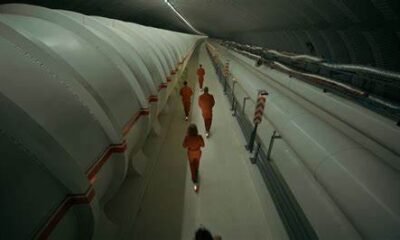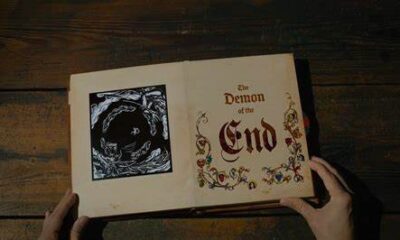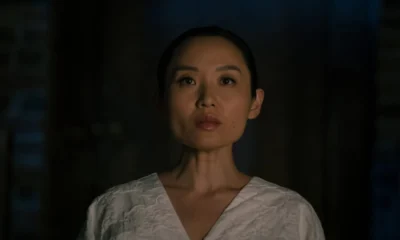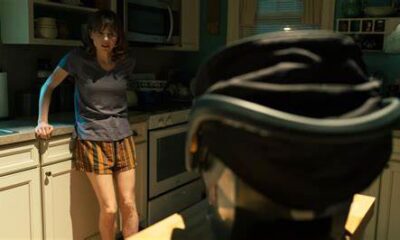
Review: Mother’s Day Massacre (2007) is a Pissing Sausage Fest
Happy Mother’s Day, everyone! Sorry I’m late to the game, but I had five mother-things to call today and you know how much they like to talk.
But thank you to all the womb providers out there that gave humanity a gooey sac to bump around in until we triumphantly punch, kicked and bit our way out. Like in Twilight – that’s how it ends, right? No spoilers, people.
So, when my internet pooped out on me, I went to my lovely collection of my dvds (I’m a dvd prepper for these situations; you can’t trust Uncle Sam to give you high speed internet at all times) and lo and behold, found a Mother’s Day movie in my “cheap schlock” pile.
Hence, I present: Mother’s Day Massacre.

The Plot:
Your guess is as good as mine.
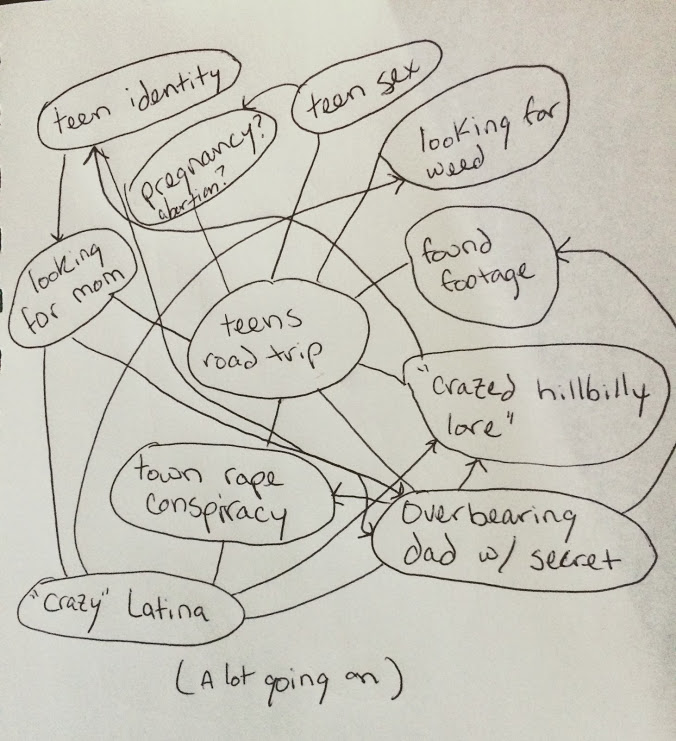
Jim is on the cusp of manhood, but is constantly emotionally abused by his over-bearing, hyper-macho Texan stereotype of a father. Never knowing his real mother, he does some research and finds clues to where she may be at.
Together with his friends, they find a ghost town and decide to get up to teenage shenanigans, only to find they aren’t alone. Thus begins the rampage and unraveling of so many secrets that were better off buried…
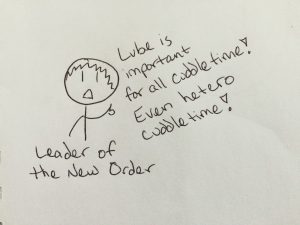
Thoughts:
Yes, I know. Yep. Uh-huh. Looks bad. Real bad.
And I’m not saying that it isn’t…but…I’m saying that they knew the tone walking into it and kept it consistent. They knew it was a short (almost 80 minutes), low-budget redneck-y slaughter-fest and kept it on the same level throughout (although Jim was blankly devoid of any Texan culture or flavor), down to the rockabilly jams and gopher-killing guns.
So, what I’m saying is, don’t judge it too quickly or harshly.
The Good:
The casting was actually really well done. The “kids” had genuine chemistry together that made it feel like they actually liked each other instead of being actors saying lines. Most of the actors have had a lot of acting under their belts and it shows. They knew to chew that scenery because that’s the type of movie this is. This is aragoto style of horror – loud, exaggerated, and rough around the edges. It’s in your face and they (especially Mel Gorham, Joe Coots and Greg Travis) executed this to a ‘T’. There was a good amount of energy to the whole movie and I think a lot of that came from the actors themselves.

Also, that flippin’ kid – Trevor Heins. That kid playing the typically old grizzled gas station attendant who spouts exposition was a cute and funny twist to the trope. As cheesy as it was, I enjoyed it incredibly.
There was also a great scene that came after the initial incident that is rarely seen in movies – the aftermath of surviving something horrific. We see how the remaining characters interact with each other after watching their friends die and how that changes them. Say what you will about the crassness of some of the scenes, but I thought this was a seldom explored little gem of a moment in storytelling and acting. Often at the end of every movie I watch, I rate how flipped they are for the rest of their lives if they survive, and this one actually answers that. It was a clever moment of writing and expression.
Good practical effects. They were scarce and probably cheap, but it was refreshing to see them…The CGI at the end…not so much.
And it had an ending I didn’t expect. It wasn’t a great ending, but it was a weird and wild one. Definitely a different turn (but was set up in a previous scene).
The Bad:
It would have been nice to see Jim as also a Texan, but a nice one? I mean, he lives with his dad in Texas, too, right? He can still be a quiet, calm, and sensitive heterosexual Texan male – I mean, there’s always Austin. But that bugged me a bit…Maybe that was something I didn’t hear or get.
The story was a bit jumbled as stated in the plot category. I think with some more story-boarding, it could have been smoother, but they may have been working with limited time or shoots that prevented more time being put into it. I know, it’s schlock, but that doesn’t mean it can’t be better schlock.
The biggest issue I guess I have is that the story had nothing to do with motherhood, really. It was all about dude-junk power, machismo, and pissing contests. Literally. There was peeing on people and things to establish a form of dominance more than once.

The main villains were males, including the killers (I consider them sub-villains), that sexually abused women. The whole movie is extremely dude-junk-centered. In fact, there is a scene in which one of the killers enters the home of his (male) victims with a raging and enormous…and the other….well, here’s a representation:
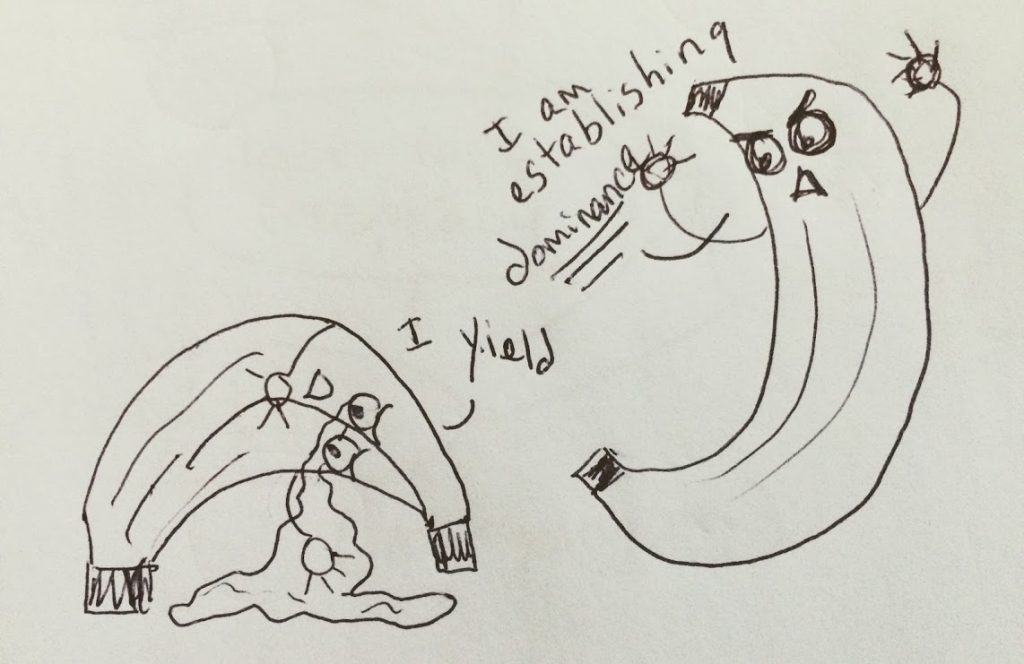
And that’s fine, but I think it would have been better as Father’s Day Massacre, especially as Jim’s father plays a huge role in this life and the consequences of this movie. So, if you’re looking for a womanhood-type thing, I would pass this up and watch Aliens, Silent Hill, or, if you want schlock, Jaws 3.
The ending with the police is super-fast, confusing, and weird. I didn’t hate it, but I thought that it could have been edited better (and please get better line reads from that cop, even if it takes all night of slapping him in the face with fish oil).
CGI gun shots…bad.
Brain Roll Juice:
For some reason, our killers are “hillbillies”. I forgot the actual wording of grizzled exposition kid, but that’s the gist. And we all know shorthand for hillbillies in horror movies…
Developmentally and intellectually disabled people.
As great as the actors are, it’s still at the expense of the DD population. It’s a trope, yeah, sure. But it’s one that gets under my skin. This movie is rife with sexual assaults, which is part of the story and movie, but putting someone with DD in the mix when people with DD are seven times higher to be assaulted just…makes it a little less fun.
As Nancy Thaler, a deputy secretary of Pennsylvania’s Department of Human Services, has stated,
“They are people who often cannot speak or their speech is not well-developed. They are generally taught from childhood up to be compliant, to obey, to go along with people. Because of the intellectual disability, people tend not to believe them, to think that they are not credible or that what they saying, they are making up or imagining.”
People with intellectual and developmental disabilities have been one of the most marginalized groups throughout history, experiencing forced sterilizations via legal action; denial of medical treatment; involuntary medical experimentation; mercy killings; physical and sexual abuses; neglect and homicides. In fact, one study showed that when it came to being murdered, the majority died as a result of neglect. This category included death by medical neglect and starvation. Can you imagine being cared about so little that you die from it?
Screw axes and chainsaws; slowly dying after a life of abuse, while not being able to speak or be believed, because society doesn’t care about you – that’s the real horror movie.
…Also, Latinas are not typically crazy, over-sexed, pot-growing, abusive brujas. Just throwing that out there (again, though, fun and campy performance by Mel Gorham).
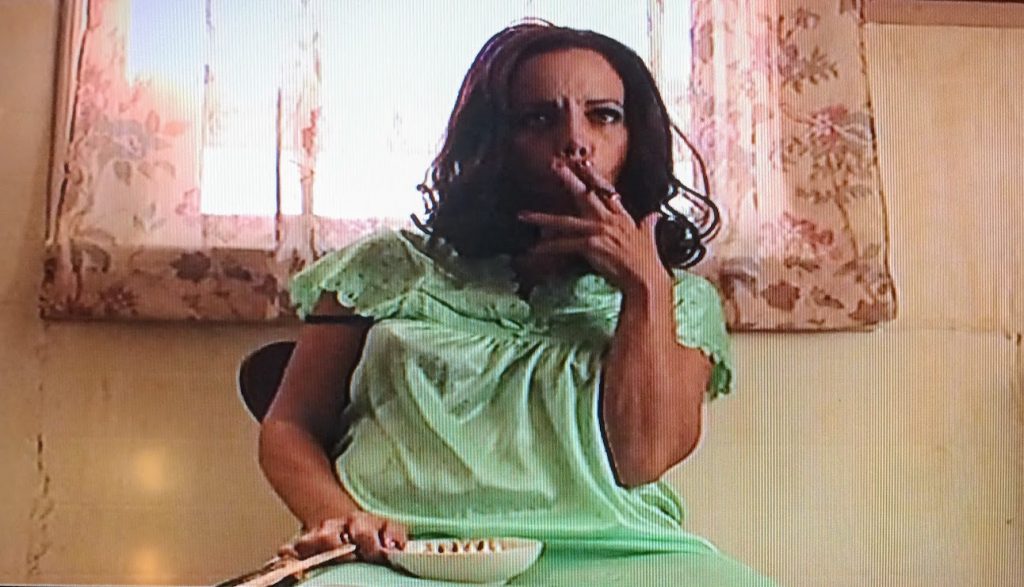
Bottom-line:
Rockabilly b-slasher with a Texan drawl. Goofy and gory enough for a movie night or two, but nothing to really knock off them socks or rocks.
 (2.7 / 5)
(2.7 / 5)
Movies n TV
Wheel of Time A Question of Crimson Is a Political Espionage Delight
Episode two of Wheel of Time felt like the beginning of a long journey. Stories are unfolding, lives are changing, and blood is spilling.
Let’s discuss.
The story
We begin this episode in the past with Elayne’s mother, Queen Morgase. It turns out her rise to the throne was a bit, shall we say, cutthroat. So when she shows up at the White Tower, Siuan is concerned.
She might have reason to be, too.
Meanwhile, Rand, Egwene, Moiraine, Lan and Aviendha are in the Spine of The World. As they travel through some of the most breathtaking lands I have ever seen on a TV show, Egwene is plagued with nightmares. We think at first that’s just her trauma working itself through her system. But we soon find out that it might not be that straightforward.
Finally, Perrin returns home to heal after his hand is almost cut in half. But when he gets there he finds the town has been infested by Children of The Light. And they’re looking for him.
What worked
There was something heartwarming in this episode about political espionage and choking religious persecution. And that is Elayne’s relationship with her family.
I have consumed a lot of fantasy content with royal families. And I have never once heard a princess call her mother ‘Mum’. I’ve never seen royal siblings get along. And I have sure as hell never seen a princess have a good relationship with her step-parent.
This was refreshing. Even though Queen Morgase is kind of a horrible person she seems like a good mother. And that’s an unexpected delight.

Of course, this is just one storyline among many. And while this can sometimes be overwhelming, in this case it wasn’t.
I’ll be honest, some of these storylines are going to drag for me. I know this because I’ve read some of the Wheel of Time books and I have an idea that not all the characters exactly pique my interest.
No one likes all the characters. No one likes all the storylines. While I am here for the political espionage between Queen Morgase and Siuan, not everyone likes it. While others might be fascinated with Selene trying to win Rand back, I couldn’t care less.
Having multiple storylines keeps everyone’s attention better. So long as things don’t get out of hand. Things can easily get out of hand. But this seems to be managed well.
So far.
What didn’t work
As I mentioned above, I’m not thrilled with Rand’s story at this point. And while it’s fine to not like a storyline when there are this many to choose from, it’s not fantastic that the one I like the least is the one involving our two main characters. And anytime we were with the team at the Spine of The World, the only thing that brought me joy was Moirain’s hat. It reminded me of Stockard Channing’s hat in Practical Magic.
The problem is that Rand is Charlie Brown with controversial magical powers. He is boring, serious, and pessimistic.
And yes, I understand that he has a heavy emotional burden and he’s the Dragon Reborn and that’s quite taxing and all. But let’s be fair, there isn’t a single person in this show that doesn’t have a heavy burden. And most of them manage to be fun occasionally.

All that being said, this episode of Wheel of Time did exactly what it needed to do. It set up conflicts at each of the three locations. It established emotional ties between the characters and the events. And it established goals for everyone.
This was, in short, a solid episode. Not groundbreaking, not mind-blowing or life changing. It was simply good. It was entertaining and moved the plot forward.
Well done.
 (3.5 / 5)
(3.5 / 5)
Movies n TV
Wheel of Time Returns With A Bang
Wheel of Time is back for season three. There are mixed feelings regarding this. Last season, there were some serious pacing issues. And some serious sticking to the book’s storyline issues. But we’re two seasons in, and we don’t give up so easily. So let’s dive into episode one, To Race the Shadow.
By the way, I highly recommend watching this episode with the subtitles on. You’ll see why.
The story
We begin this episode with Liandrin facing a trial of sorts for her rampant betrayal. She does her best to gaslight her Aes Sedai sisters into thinking that Siuan Sanche is the real traitor.

When that doesn’t work, she reveals how many Black Aes Sedai have actually infiltrated the tower.
Spoiler, it’s a lot.
In the aftermath, our whole team gathers to drink and enjoy one night of relaxation before they head out to the Tear to form an army for Rand. All is going well until they’re attacked by myriad creatures and a sentient axe.
What worked
This episode was long. It had a run time of an hour and eleven minutes. And a lot of that run time was spent in heavy dialog scenes.
Fortunately, these were well-done scenes.
If you’re going to have a lot of talking scenes, there are good ways and bad ways to do it. Last season, we saw lots of examples of the bad way to do it. But this episode did it well. For one thing, other things were going on while conversations were taking place. The characters are drinking, playing games, walking through an interesting city. And the scenes themselves didn’t stretch out. They weren’t repetitive. We heard what the character had to say, then we moved on.
It was also nice that the point of these scenes wasn’t just info dumps. We had character development. We had romantic interactions. We had plot development and foreshadowing.
Overall, this episode felt like what it was. A moment of calm before a storm.
Taking a step back, I’d be remiss if I didn’t address the fight scene at the start of the episode. Because it was epic.
The magic looked amazing. The martial arts that went along with it looked fantastic. The costumes were beautiful. It was just incredibly fun to watch.
More than that, it was emotional. We lost some characters in that fight that were important. And it was clearly emotionally shattering for many of our characters, who found themselves betrayed by people they trusted.
So many of them.
It was a great way to open the season.
What didn’t work
Despite that, this episode wasn’t without its flaws.
First off, there were a lot of dialog scenes. And they were good scenes, as I’ve already discussed. But it was one after another after another. And when your episode is, again, an hour and eleven minutes, it’s maybe a little much to have so much chit-chat. Couldn’t some of these conversations, important as they were, have been moved to maybe another episode?
Finally, I want to talk about Egwene’s travel through the arches.

I feel like maybe there were some deleted scenes here. Because there must have been more to that visit than what we saw, right?
We could have seen Egwene battle Rand. That would have been badass and emotionally devastating. We could have seen her with a quiet life with Rand back home at the Two Rivers. We could have seen anything except for the quick clip of Rand in a bloody river, followed by Egwene being shoved back out in a bloody shift.
Bad job. But at least it wasn’t an extended scene of Moiraine collecting bathwater, and then taking a bath while looking sad. If we’d started this season with another scene like that, it might have broken my brain.
Amazon dropped the first three episodes at once. So we’ll be back soon to talk about episode two. See you then.
 (4 / 5)
(4 / 5)
Movies n TV
Entertaining as hell: Eight Legged Freaks (2002) Review
Early 2000s is a special era for the industry. It accepts the cheesiness and corniness of movie making, in turn producing some gems in their own right. Eight Legged Freaks starring David Arquette and young Scarlet Johanson is a horror comedy about giant spiders who overtake a small town. As crazy as that premise sounds, the movie surprisingly has a ton of heart and is super entertaining. Let’s review, shall we?
Plot
We start Eight Legged Freaks with a shot of toxic waste spilling into the water supply of Joshua, a spider farm owner. He is friends with Mike, one of our protagonists, who is a science geek and a spider enthusiast. Mike notices something quite right upon visiting Joshua, but no one takes him seriously. We are then introduced to the rest of the crew. Mike’s mother Samantha, the town sheriff, is too busy chasing Ashley, his sister, who is dating the town mayor’s son Bret (something Samantha does not approve of). We also have Chris, who returns to the town to save his father’s legacy in the town mines. He has opposition from Wade, Bret’s father, who wants to use the mines for his business ventures. Lots of drama going on that will only get juicier once the spiders get loose.
The creepy crawlies quickly dispose of Joshua and make their grand appearance after Ashley rejects Bret’s advances, abandoning him in the middle of a desert. A glorious chase sequence ensues as the spiders make their way towards the town, wreaking havoc on its residents. In a true horror fashion (which the movie acknowledges), it takes some convincing from Mike and then from Samantha for the town to take the threat seriously. The tongue-in-cheek style of narrative adds the comedy aspect to a movie that would otherwise burn out fairly quickly.
The remaining characters hide out in a shopping mall as it’s the only somewhat sturdy building in the area. This doesn’t last long as the spiders break in, forcing them to run through the mines. Their resources to fight the creepy crawlies off are limited as the methane gas doesn’t allow them to use firearms. Such conditions require resourceful thinking from Chris, who uses perfume to fend off the leader of the spider group and save himself during the climax of the movie.
Character dynamics are not forgotten once the action kicks in. We have Chris confessing his long-term feelings for Samantha which she knew all along, which provided some comedic relief. Bret also reunites with Ashley and apologises for being an asshole. Mike finally gets the appreciation he deserves as his knowledge saves the townsfolk more than once during the whole ordeal.
We end the movie with the town’s radio show person telling the story as an urban legend during his segment. This brings it into question – how much of it happened the way he said it did? We can only guess…
Overall thoughts
Eight Legged Freaks is a fun creature feature with some self-aware commentary on genre tropes that doesn’t take itself too seriously. The acting is good, the pacing fitting and the characters are likeable enough for you to want them to make it through. Definitely a must watch, if you don’t suffer from arachnophobia, that is.
 (5 / 5)
(5 / 5)


